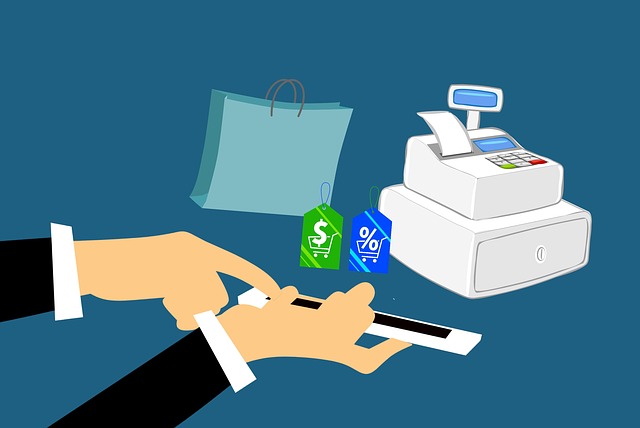It is true that cash and cards are still ruling the fintech infrastructure, but mobile wallets have been gaining traction in the last couple of years. The younger generationis thrilled by the simplicity of mobile payments and can’t get enough of such novel innovations.
In 2016, the mobile payment market was pegged at $601 billion. As per a research firm, Allied Market Research, the global mobile payment market is expected to reach $4,574 billion by 2023, registering a colossal CAGR of 33.8% during the period 2017–2023. Moreover, the market is growing at a lightning-fast rate in the Asia-Pacific region, as emerging countries adopt e-commerce and mobile payments to support the cashless campaign.
While mobile payments are a watershed in the history of fintech,, people have witnessed enormous updates in the last few years with the integration of near field communication (NFC) technology and QR codes that enable scan-and-pay transactions. As a result, the major market players in the banking industry are investing a huge pile of money in developing dedicated mobile payment platforms. For instance, a commerce-driven fintech company, First Data, recently acquired ayCash, a leading company that specializes in cashless payment terminals and operated YesCash and Cash4Less.
Moreover, the major market players are looking for SMBs to handle their mobile payment business. Mastercard recently released a report stating that if a company wants to go through technological development, it should look at small and midsize business (SMBs).
Mobile payment service providers have been embracing novel innovation to meet increasing customer demand. Every day a new payment service emerges that redesigns the online transaction ecosystem. As a part of this shift, mobile payment services have seen and are about to witness some significant trends, some of which are discussed below.
Major trends in the mobile payment market
1. Mobile commerce
People embraced the idea of mobile wallet and as per analysts it will drive the mobile payment market and be the major factor to shift the fintech world. With the help of mobile wallets customers, as well as retailers, can improve transaction experience across online shopping platforms. Apart from major retailers, small or big restaurant owners are following the trail of mobile commerce, as customers no longer have to look for the nearest ATMs to withdraw cash before going to a restaurant. Moreover, with the emergence of quick service restaurants (QSRs), customers can order their meals without visiting a restaurant. Major food chains such as Burger King, Starbucks, and Chipotle have already adopted the “quick order” function. Additionally, in-app payment options are gaining more popularity, supplementing the growth of mobile commerce.
2. Blockchain
Apart from cryptocurrency, blockchain has redefined online security. Blockchain is now regarded as the most promising technology in mobile payment for the coming years as it offers more transparency than any other conventional method of transaction. With the inclusion of blockchain in the fintech world, bitcoin and other virtual currencies have entered day-to-day financial transactions.
3. Proximity mobile payment
Whipping out a smartphone, tapping it against the payment platform, and storming out from the market was the basic idea behind proximity mobile payments. However, the reality is a little different, and the technology has not quite taken off the way it was supposed to. Today, consumers have a variety of options for mobile payment such as Google Pay, Apple Pay, and Samsung Pay. Thus, the proximity mobile payment market has been left behind somewhat because customers have compelling reasons to stick with available mobile payment options. However, it is expected that proximity will gain momentum in the coming years.
4. Voice Commerce
Although voice commerce is still in its infancy, it is seen as the most disrupting technology in the fintech sector. About 8% of people used voice commands to shop online in 2018 and it is expected that over the next two years more than 30 billion internet of things (IoT) devices and connected devices will enter the network of the internet. This provides an indication of how voice commands could take over the current methods of mobile payment. In the future, chatbots, in-home, and connected devices could drive the demand for voice commerce and take mobile payments to a whole new level.
5. Card-to-cloud transition
As the trends in mobile payment evolve, consumer technology is advancing. In today’s digital world, an average customer spends about 11 hours of his day online and most important decisions are at his fingertips. Since technology is transforming itself, credit cards are no longer sufficient for fulfilling a customer’s requirements. This is the major reason behind the success of the card-to-cloud transition. Today, we can use the digital version of a credit card with the help of smart devices and digital accounts. In fact, in 2017, Visa supported the trend of mobile payments and launched its own solution called mVisa that allows paying without taking out your credit card. It uses QR codes on a smartphone to pay from your digital account into retailer’s cards.
It is clear that the mobile payment market is going to reshape the fintech world and how, when, and where people perform online transactions. The development of a multitude of applications and gadgets are already in process. So, keep your smartphones close and mobile wallets closer, because the future of mobile payment is coming, and you better be ready for it.





